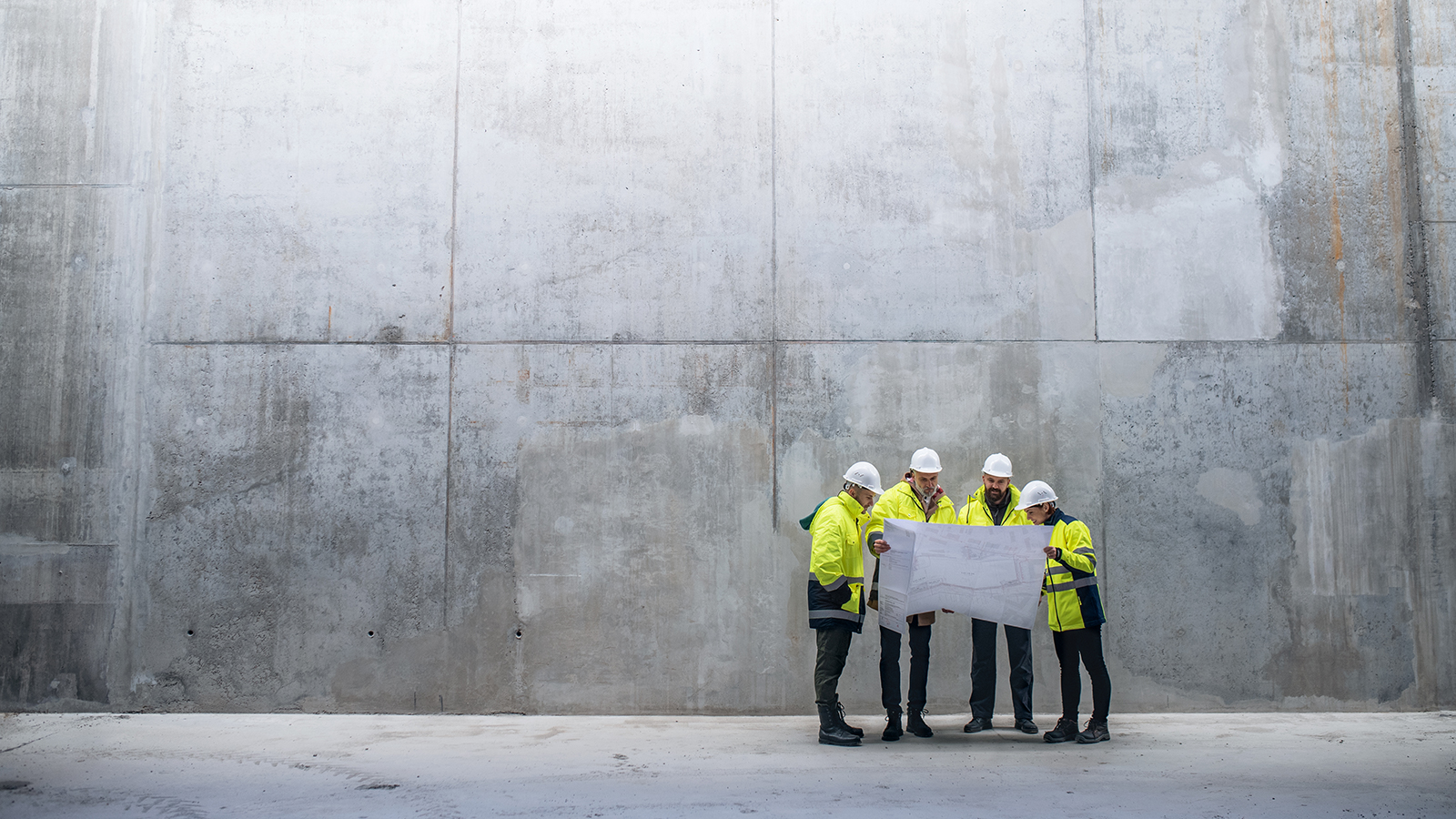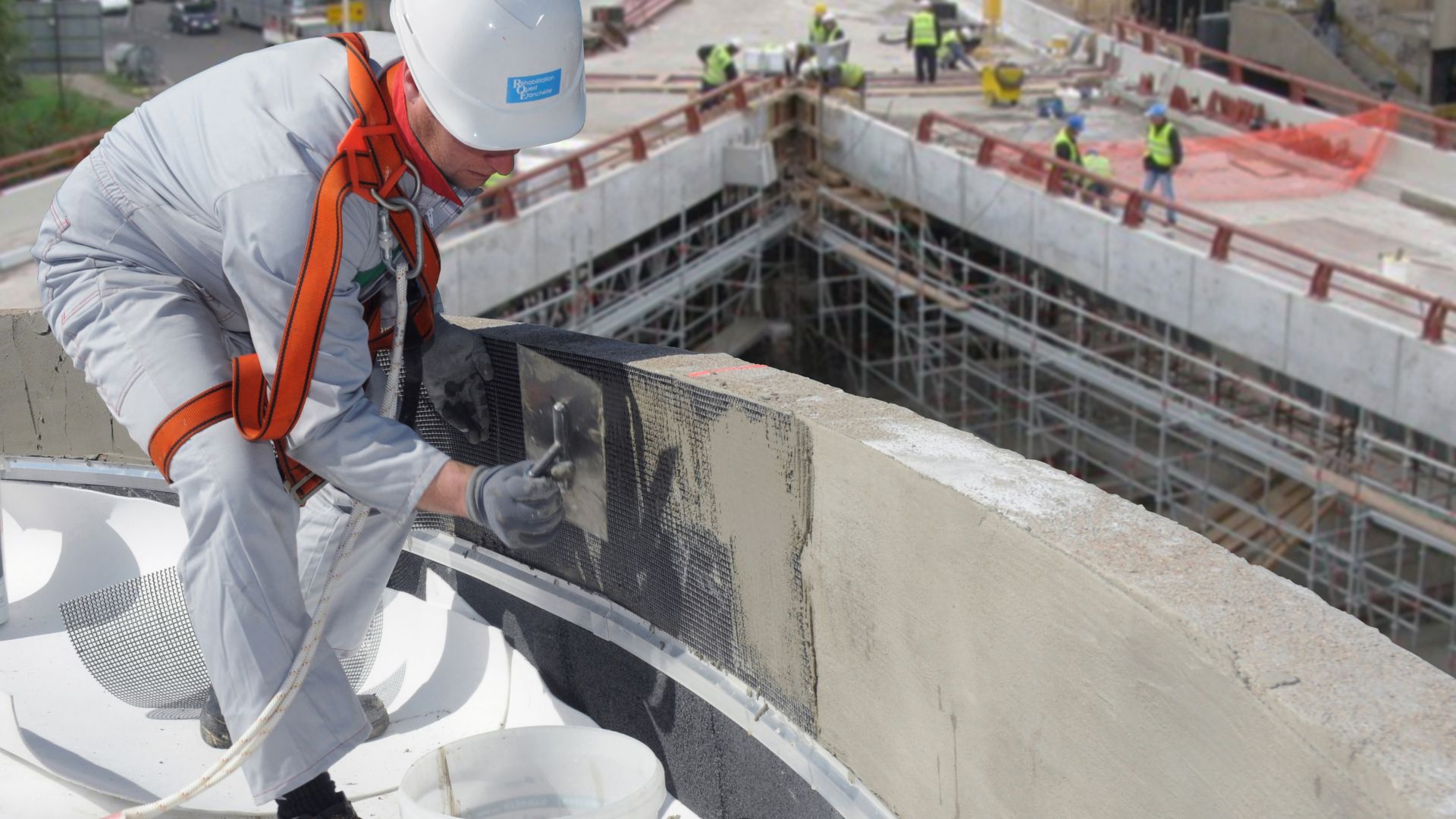What Makes WCGE commercial concrete a Proven Choice for Commercial Development?
What Makes WCGE commercial concrete a Proven Choice for Commercial Development?
Blog Article
The Important Duty of Concrete Structure in Structural Stability and Long Life
When it comes to building a home, the structure is extra critical than you might think. Concrete foundations offer unrivaled stamina and toughness, guaranteeing your structure can withstand various environmental challenges. Without a strong base, you take the chance of possible concerns like changing or fracturing, which can endanger safety and security and worth. Recognizing the subtleties of concrete foundations could be the key to preserving your investment for years ahead. What should you think about next?
Understanding the Importance of Concrete Foundations
Concrete structures are vital to the total security of any framework, as they supply the vital support required to stand up to different loads and environmental problems. When you think of building a home or a business area, the structure is the very first thing you need to think about. It acts as an obstacle against dampness, protecting your property from water damage. A well-placed concrete structure additionally avoids settling and changing, which can result in cracks in walls and floorings. You'll want to ensure that the structure is correctly made and strengthened, as this influences the durability of your structure. Additionally, a strong structure can enhance power efficiency by lowering air leaks. Keep in mind, neglecting the value of a concrete structure can result in costly fixings down the line. Investing in a quality structure upfront is vital for the honesty and resilience of your structure.
Advantages of Concrete Structures for Architectural Integrity
While numerous factors add to a structure's architectural honesty, concrete foundations offer unrivaled toughness and toughness. You'll appreciate that concrete can stand up to severe weather conditions, resisting both wetness and temperature changes. This strength suggests your framework is less likely to experience breaking or moving gradually, which can jeopardize its safety.Additionally, concrete's intrinsic weight gives a strong base, protecting against movement during natural events like earthquakes or floods. When you choose a concrete foundation, you're also selecting low maintenance; unlike wood, it won't rot or draw in bugs, conserving you money and time in repairs.Moreover, concrete's fire resistance uses added security, ensuring your structure can sustain high temperatures without considerable damage. In general, purchasing a concrete structure suggests you're focusing on the long-lasting stability and integrity of your structure, making it a wise selection for any type of building and construction task.
Typical Kinds Of Concrete Foundations
When it comes to constructing structures, comprehending the typical sorts of concrete structures can assist you make informed selections for your job. The most common types consist of slab-on-grade, crawl area, and full cellar foundations.A slab-on-grade structure is an easy, cost-effective alternative, where a thick concrete slab is poured directly on the ground. This kind works well in warm climates, as it minimizes warmth loss.Crawl space structures raise the home somewhat above ground, permitting for air flow and access to pipes and electrical systems. This style can help protect against wetness issues.Full basement structures use additional living or storage area while providing superb structural assistance. They require more excavation and are generally made use of in chillier climates to prevent frost heave.
Aspects to Consider When Creating a Concrete Structure

Ideal Practices for Installing Concrete Foundations
When you're mounting a concrete foundation, correct site preparation is essential to ensure security (West Coast General Engineering commercial concrete). You'll additionally require to understand support strategies to enhance stamina and longevity. Finally, don't ignore the healing procedure, as it plays a fundamental function in attaining a strong foundation
Site Preparation Value
Although it might seem straightforward, correct website preparation is essential for assuring a solid and resilient concrete foundation. Beginning by removing the area of any kind of debris, vegetation, or natural material that might jeopardize the foundation's stability. Next, analyze the soil type and compaction; you may need to dig deep into or add materials to create a stable base. Degree the ground to guarantee also weight distribution and avoid resolving problems later on. Installing proper drain systems is also necessary to stop water accumulation, which can damage the foundation with time. Mark out the foundation's measurements accurately to assist the putting process. By complying with these steps, you'll set the phase for a successful concrete structure that stands the examination of time.
Reinforcement Strategies Discussed
As soon as the website is effectively prepared, the following action in assuring a sturdy concrete foundation entails implementing efficient support strategies. You must start by utilizing steel rebar, which gives tensile strength and helps stop fracturing. Lay the rebar in a grid pattern, ensuring it rises utilizing spacers to keep correct coverage. Furthermore, take into consideration using wire mesh for extra support, particularly in locations based on hefty lots. Do not forget to tie the rebar crossways safely with cable. For bigger structures, fiber support can boost resilience, decreasing the danger of contraction splits. Constantly adhere to local building ordinance and guidelines to ensure compliance. By applying these support strategies, you'll greatly improve your foundation's toughness and longevity, laying a solid foundation for your structure.
Healing Refine Essentials
To ensure your concrete structure remedies appropriately, it is necessary to preserve sufficient wetness and temperature level problems instantly after pouring. Start by covering the surface with a damp cloth or plastic sheet to keep moisture. This maintains the concrete moisturized, stopping cracks and ensuring toughness. You need to likewise keep track of the temperature; ideal healing problems are in between 50 ° F and 90 ° F. If it's also warm, mist the surface area regularly to prevent quick evaporation. For winter, think about utilizing insulating coverings to preserve heat. Goal for a curing duration of at least 7 days, as this is crucial for optimal stamina advancement. By following these ideal practices, you'll boost your foundation's durability and long life, guaranteeing architectural integrity for several years ahead.
Maintenance of Concrete Structures for Longevity
To maintain your concrete foundation strong and lasting, routine examinations are vital. You should likewise ensure reliable drainage options are in location to stop water damage. If you identify any fractures, resolving them promptly will conserve you from bigger issues down useful content the line.

Normal Examinations and Analyses
While routine evaluations and assessments could appear like a duty, they're vital for maintaining the integrity of your concrete structure. By regularly checking for splits, changes, or signs of wear, you can catch prospective issues prior to they escalate right into expensive repairs. Look for any kind of water pooling around the structure or unusual settling, as these can signal underlying troubles. It's likewise important to check any type of modifications in your house's structure, like doors that stick or windows that do not open smoothly. Maintaining a record of your examinations assists track adjustments over time, enabling aggressive maintenance. Inevitably, these assessments assure your foundation continues to be stable, sustaining the longevity and security of your whole structure. Don't overlook this essential element of homeownership!
Effective Drain Solutions
Normal assessments can reveal issues like water drainage problems that may endanger your concrete foundation's security. To prevent water build-up, ensure your seamless gutters and downspouts direct water far from the structure. Installing French drains can properly redirect surface area and groundwater, minimizing stress on your foundation walls. Furthermore, rating the soil around your home helps ensure that water streams away, instead of merging near your foundation.Consider using sump pumps in locations prone to flooding, as they proactively remove excess water. Regularly look for blockages in water drainage systems and clear them promptly. You'll safeguard your structure's stability and long life by taking these aggressive measures. Remember, effective drainage services are necessary for keeping a strong, long lasting concrete structure.
Trigger Fracture Fixes
When you observe splits in your concrete structure, resolving them immediately is necessary for keeping its long life. Small cracks can quickly evolve right into bigger concerns, endangering the architectural stability of your home. Frequently check your foundation for signs of damages, such as straight or upright fractures. If you find any, do not wait-- fix them quickly. You can make use of epoxy injections or concrete patching compounds, which work for securing cracks. Constantly adhere to the maker's directions and consider consulting a professional for substantial damage. Remember, prompt repair services not only improve your foundation's durability yet likewise save you cash in the future by preventing a lot more comprehensive repairs down the line. Keep proactive, and your structure will remain solid and protected.
Resolving Typical Issues With Concrete Structures
Concrete foundations can encounter various concerns in time, making it critical to identify and resolve them quickly. Among the most usual problems is splitting, which can occur as a result of temperature changes or settling soil. If you see visit this page cracks, it's important to evaluate their dimension and deepness; little fractures can frequently be secured, while larger ones may call for professional evaluation.Water invasion is an additional major issue. Excess dampness can result in mold development and architectural degeneration. Warranty proper drain around your structure to minimize this risk. Furthermore, try to find indicators of shifting or bowing wall surfaces, as this can suggest underlying issues with your foundation's stability.Regular assessments are basic to catch these problems early. If you find any type of worrying indications, do not hesitate to speak with a foundation professional. By remaining aggressive, you can keep the honesty and long life of your concrete structure, guaranteeing your home remains safe and safe and secure.
Frequently Asked Questions
How Does Soil Type Affect Concrete Foundation Performance?
Dirt kind greatly affects concrete structure try here performance. If you've got expansive clay, for circumstances, it can cause changing and cracking. Sandy soil could bring about resolving. Comprehending your dirt assists ensure a steady foundation.
Can Concrete Foundations Be Fixed if Harmed?
Yes, you can fix damaged concrete foundations. Depending on the level of the damages, methods like epoxy shot or piece jacking can restore security. It's best to get in touch with a professional for efficient options.
What Is the Typical Life-span of a Concrete Structure?
A concrete foundation typically lasts 30 to 100 years, depending upon variables like dirt problems, environment, and upkeep. You'll wish to watch on it to assure it stays healthy throughout its life-span.
Exist Option Products to Concrete for Foundations?
Yes, there are alternatives to concrete for foundations, like steel, timber, or even recycled materials. Each choice has distinct benefits and downsides, so you ought to consider your project's particular requirements when selecting the best material.
How Does Environment Impact Concrete Structure Toughness?
Environment significantly affects concrete foundation durability (West Coast General Engineering commercial concrete Rancho Cucamonga). Extreme temperature levels, wetness, and freeze-thaw cycles can compromise the material, resulting in splits and architectural problems. You need to take into consideration regional environment conditions when preparing your foundation to ensure long-term efficiency
Report this page